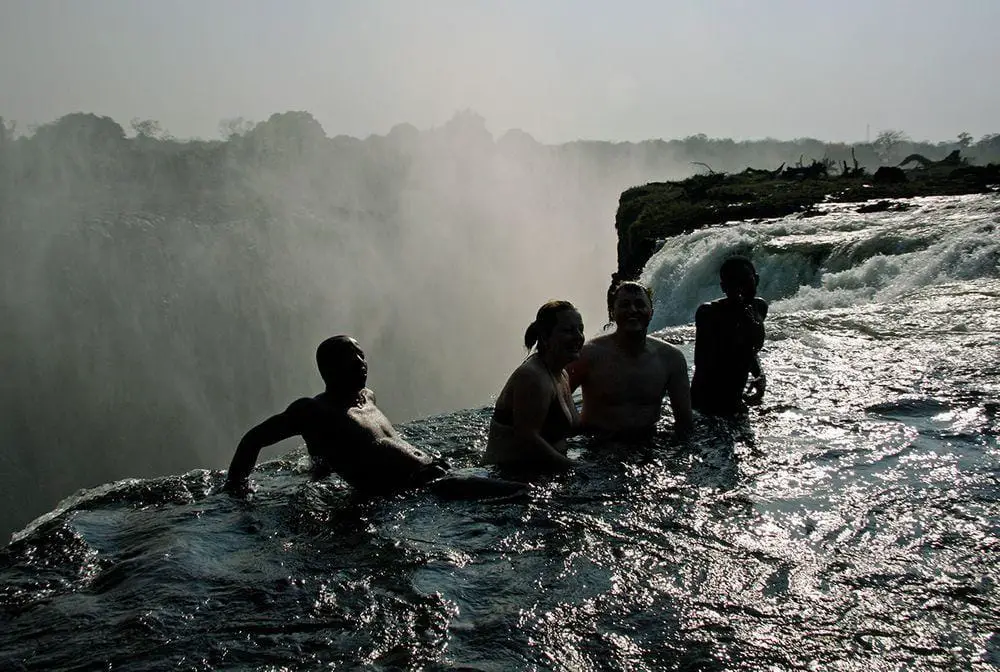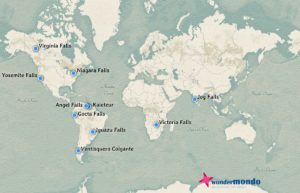Waterfalls 🢔 Geological wonders 🢔 Categories of wonders
Wonder
Victoria Falls (Mosi-oa-Tunya)
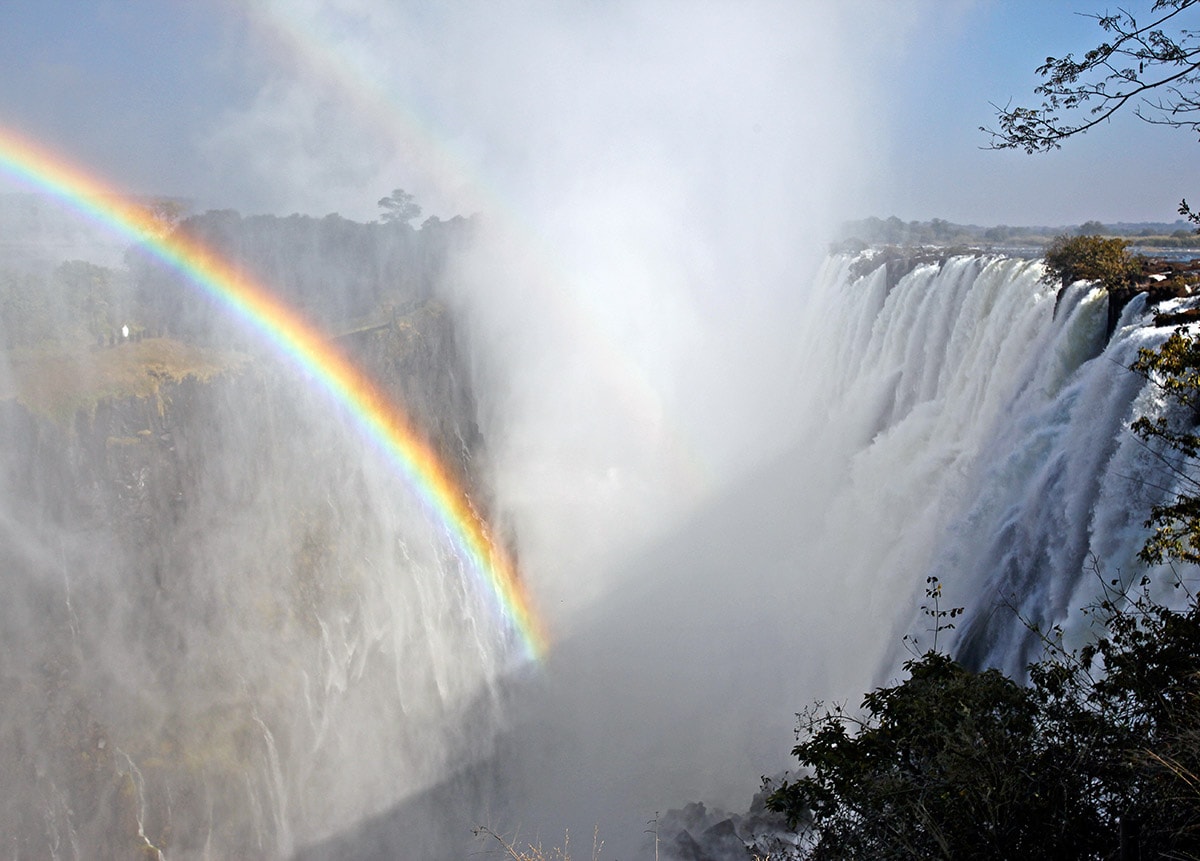
 In short
In short
The most impressive waterfall in the world could be Victoria Falls (Mosi-oa-Tunya). This unique waterfall unites significant height (108 m), width (1,708 m), and flow (average annual flow – 1,088 m³/s) and forms the largest curtain of falling water in the world.
 84.2%
84.2%
GPS coordinates
Location, address
Alternate names
Height
Drops
Width
Average annual flow
Highest recorded flow
Stream
UNESCO World Heritage status
Map of the site
If you see this after your page is loaded completely, leafletJS files are missing.
 In detail
In detail
Geology of Victoria Falls
Victoria Falls have formed on some 300 m thick layer of 179 – 180 million years old basalt of Batoka Formation.
Waterfall has a peculiar form. Well before the falls, the Zambezi river widens from some 350 m to more than 1 km, and it becomes more shallow and with many islands. Here it flows on the surface of the basalt layer.
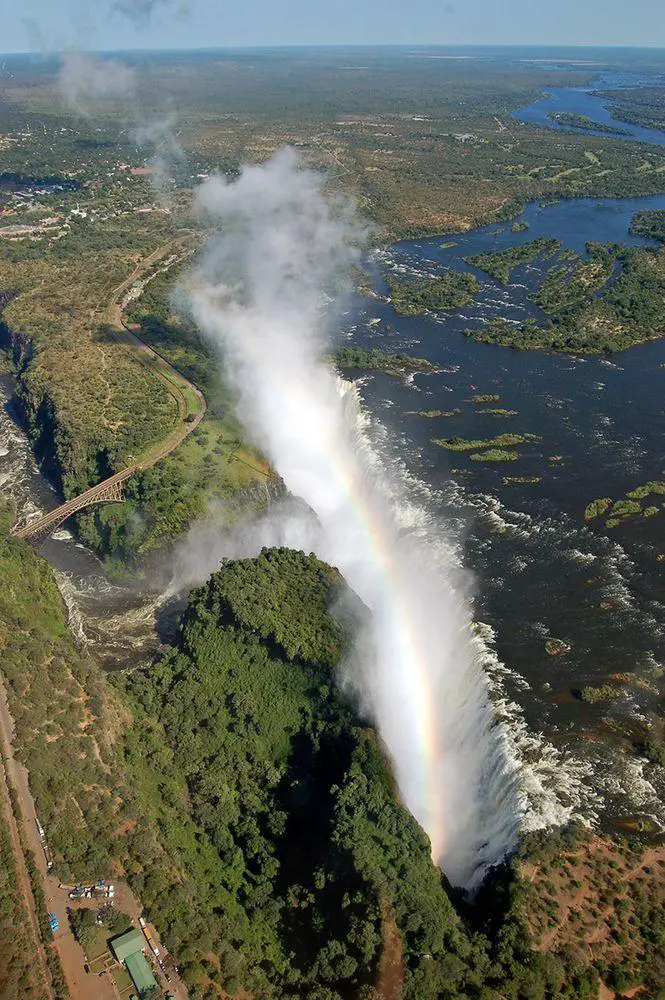
Cooling of the basalt formed fractures which were widened some 110 million years ago and filled with sandstone – a less sturdy material than basalt.
As the powerful stream of Zambezi reached these sandstone-filled fractures, sandstone was washed out, gradually forming a deep gorge with a wide waterfall falling into it.
It is considered that the first waterfall on the Zambezi formed some 5 million years ago – it was located further downstream.
Current waterfall is the sixth consecutive waterfall and was formed some 250 – 100 hundred thousand years ago.
Description of waterfall
These are not the only falls on Zambezi river – 340-370 km upstreams are the 1.3 km wide and 8 – 20 m high Ngonye Falls, there are several more impressive rapids between both falls.
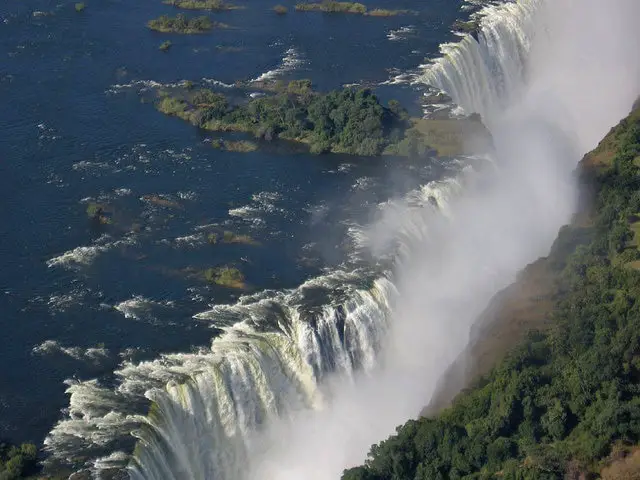
Victoria Falls though is by far the most impressive one. Zambezi river here flows through a plain and this dramatic abyss could come as a surprise – if not the thundering noise of falls and an enormous cloud of mist above the gorge.
First Gorge
The fracture of the basalt is fairly even and thanks to this the front of the falls is almost straight. At the falls Zambezi reaches a width of 1,708 m (at high water – up to 1,951 m) and the whole river falls into a deep abyss – the First Gorge.
First Gorge is only 50 – 120 m wide. At the western end, falls are considerably lower – 80 m, at the middle the height reaches a maximum of 108 m.
Islands and streams
Waterfall is dissected by two larger islands – Boaruka Island closer to the western bank and Livingstone Island in the center. When water is low, there appear many more islands.
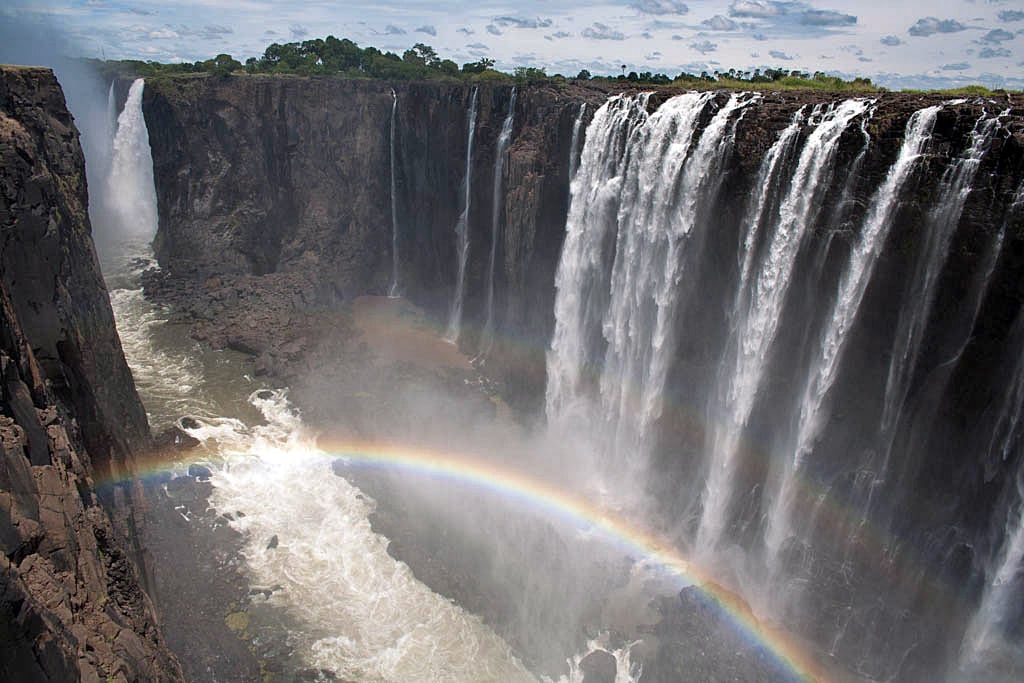
Starting from the west the most pronounced streams in the waterfall are – Devil’s Cataract, Main Falls, the highest part – Rainbow Falls, and the Eastern Cataract.
At Livingstone Island on the Zambian side is located Devil’s Pool. Between September and December, when the water is low, the stream here is less powerful and the natural stone barrier prevents it from falling into the abyss. Then the adventurous swimmers can enter this basin, but should do this with great care: mistakes lead to imminent death.
In Devil’s Cataract forms a new gorge, which will add a new stage of a zigzag, starting at the western end of the current falls. Most likely some 10,000 years from now there will be another waterfall – the seventh one.
Rainforest and fish
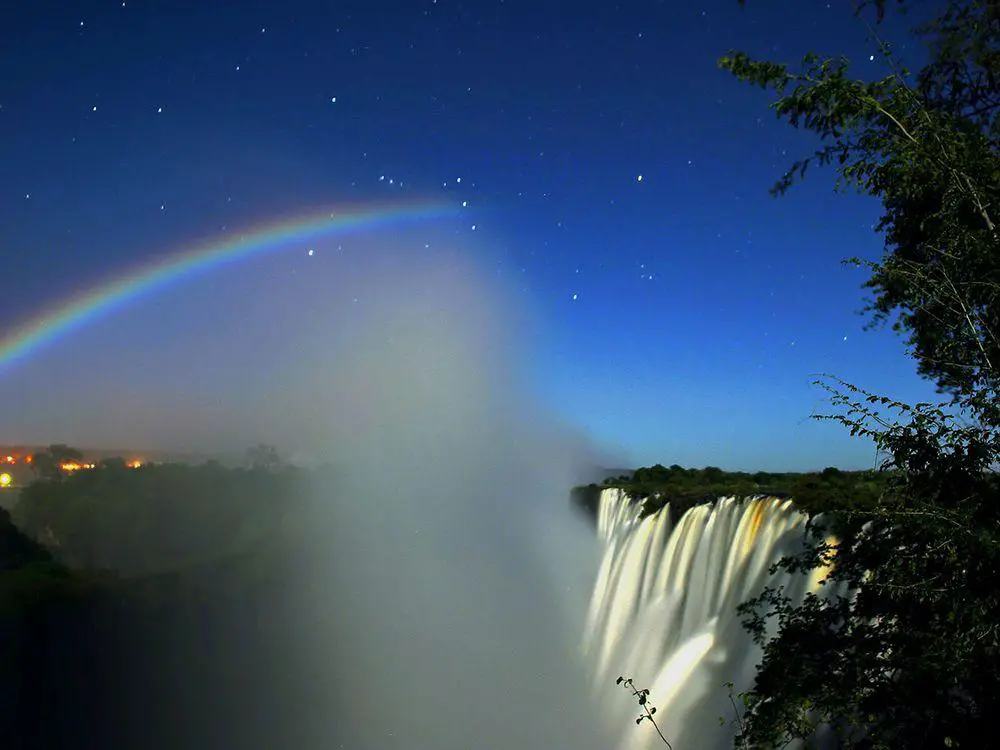
In the plains around the falls has developed woodland savannah – this region of Africa has a rather dry climate. The mist of the waterfall though has facilitated the development of a small patch of true rainforest in a cliff pocket below the falls. This rainforest contains numerous rare species of plants and animals.
Below the falls in Zambezi live 39 species of fish, but above – 89 species. Species on both sides of the falls are different – a testimony of the times when in the site of present-day Zambezi were two different rivers, which were later united by tectonic movements.
Other gorges – previous falls
Water leaves the First Gorge through a 110 m wide cleft and enters the zigzag of earlier waterfalls. Next comes the 2.15 km long Second Gorge, which is crossed by the gracious Victoria Falls Bridge. Then comes the 1.95 km long Third Gorge, 2.25 km long Fourth Gorge, 3.2 km long Fifth Gorge, and 3.3 km long Songwe Gorge. The last – Songwe Gorge – is the deepest, 140 m deep. All these gorges in the past served as the fronts of waterfalls, one by one receding upstreams. Thus, when the waterfall 5 million years ago was falling in Songwe Gorge, it was 3.3 km wide – much wider than now and 140 m tall: taller than now.
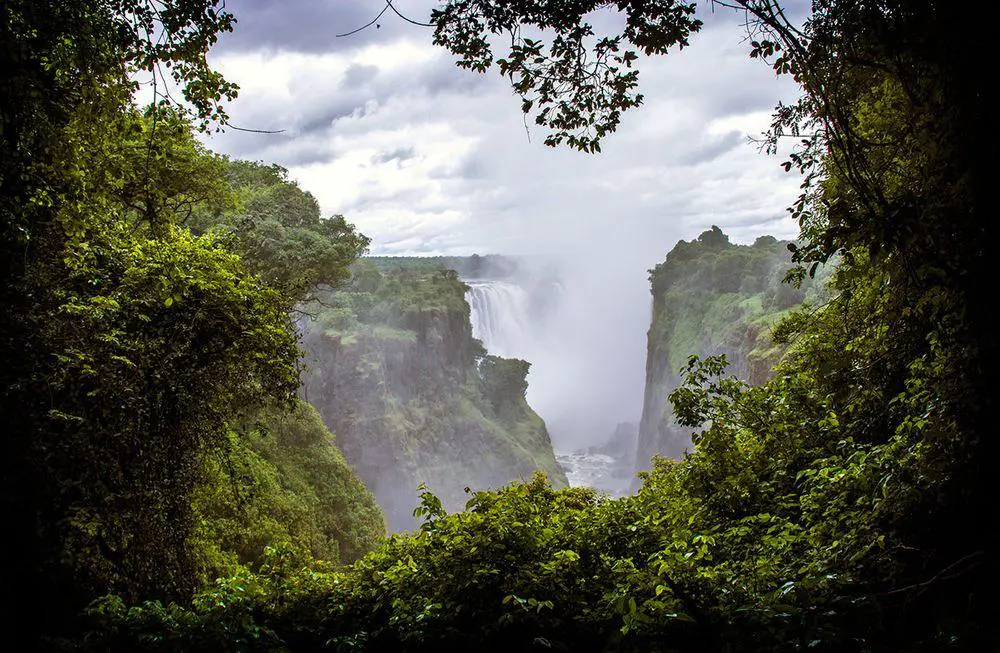
Rainy season and dry season
Contrary to the two other giant falls on Earth – Iguazu Falls and Niagara Falls – Victoria Falls have pronounced fluctuations in flow throughout the year.
In late November – early April there is a rainy season and in April come floods. Then Victoria Falls are heard from a long distance. Even further away – up to 45 km far can be seen mist from falls, which can rise up to 300 – 500 m high.
The flow of water then can reach 12,800 m3/s – unsurpassed by any major waterfall in the world.
WHen the water has a high level, falls are definitely impressive but not easy to observe – all the area is shrouded in mist, so it is not advised to use photo cameras. The spray is as powerful as strong rain and often falls upwards, driven by the turbulence of the air in the deep crevices.
When the dry season comes, the stream becomes scarce. In November the flow rate falls to 170 m³/s. Then it becomes possible to enter the First Gorge by boat and walk along some stretches of the gorge.
Human history
People have been living at the falls for millions of years – here were found stone artifacts made by Homo habilis 3 million years ago.
As time went by, people speaking different languages came and left, leaving traces of different cultures.
Livingstone
There is a possibility that some Europeans saw the falls earlier (falls are shown on European maps, which were issued in 1715 and 1750), but the first one to appreciate and describe the falls was a Scottish missionary and explorer David Livingstone, who reached the falls on 16 November 1855.
Livingstone was excited about his discovery and wrote: "No one can imagine the beauty of the view from anything witnessed in England. It had never been seen before by European eyes, but scenes so lovely must have been gazed upon by angels in their flight." He named the falls in honor of Queen Victoria, although noted that locals called it Mosi-oa-Tunya – "the smoke that thunders" (could be that more exact translation is "the smoke that rises" (1)).
Tourism development
After Livingstone falls were visited and described by several European explorers but more visitors came when the railway was built in 1905.
Gradually tourism developed here. Warfare lasted for long decades in this region of Africa in the 20th century – but the area around the falls was comparatively calm. Since the 1980s mass tourism developed, and Livingstone town (Zambia) and Victoria Falls town (Zimbabwe) became comparatively prosperous.
Stay in this area is expensive also by European and American standards – but a short visit is not that expensive. Unfortunately, the development of tourism gradually removes the natural charm of falls, there are increasing problems with waste management.
Local people, in general, recognize the importance of Victoria Falls. Since 1934 falls are protected, and Mosi-sa-Tunya National park was established in 1972. The waterfall was included in the UNESCO World Heritage list in 1989, but improper development and management of this unique landmark is a matter of concern.
References
- Native Name of Victoria Falls, The Northern Rodesia Journal. Volume I, No.4., 1951. Accessed on 01.04.2013.
Victoria Falls are included in the following article:
 Linked articles
Linked articles
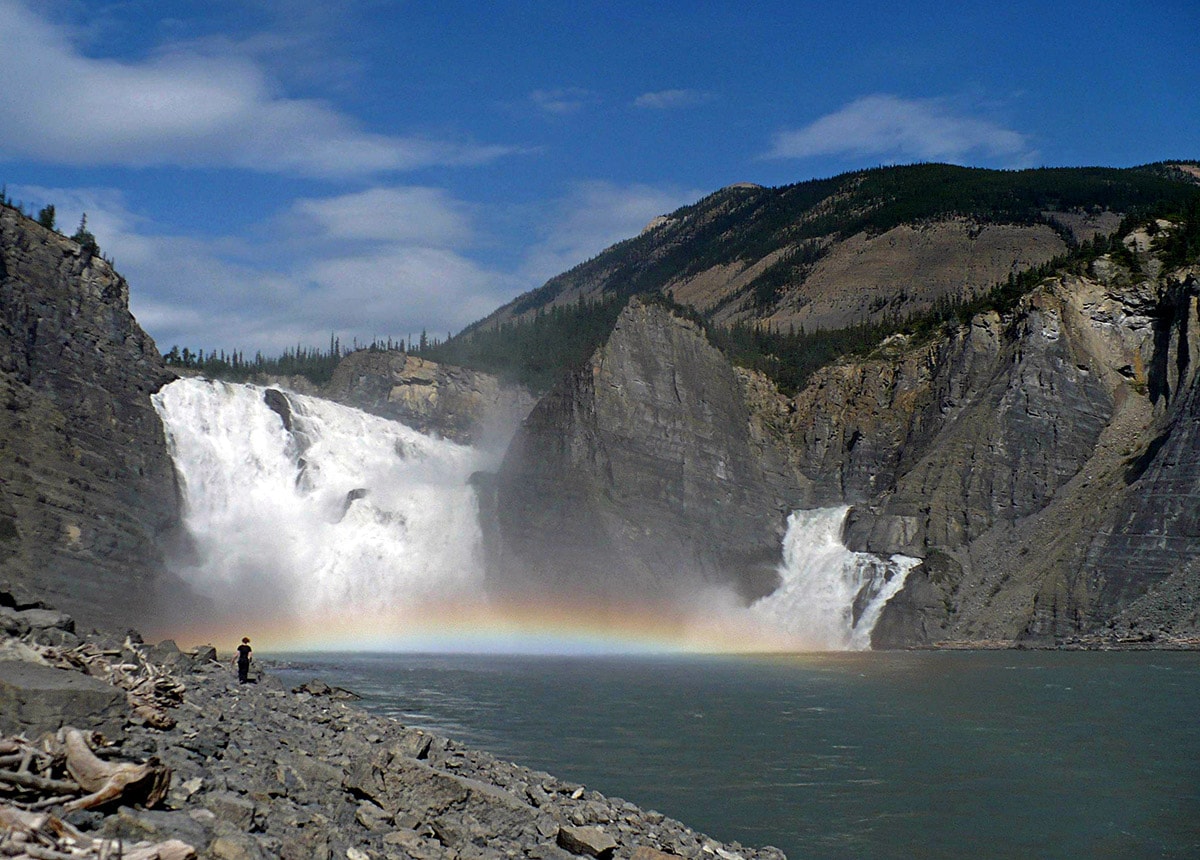
Waterfalls
Some of the most fascinating and awe-inspiring natural monuments are waterfalls or locations where a river abruptly changes its elevation.
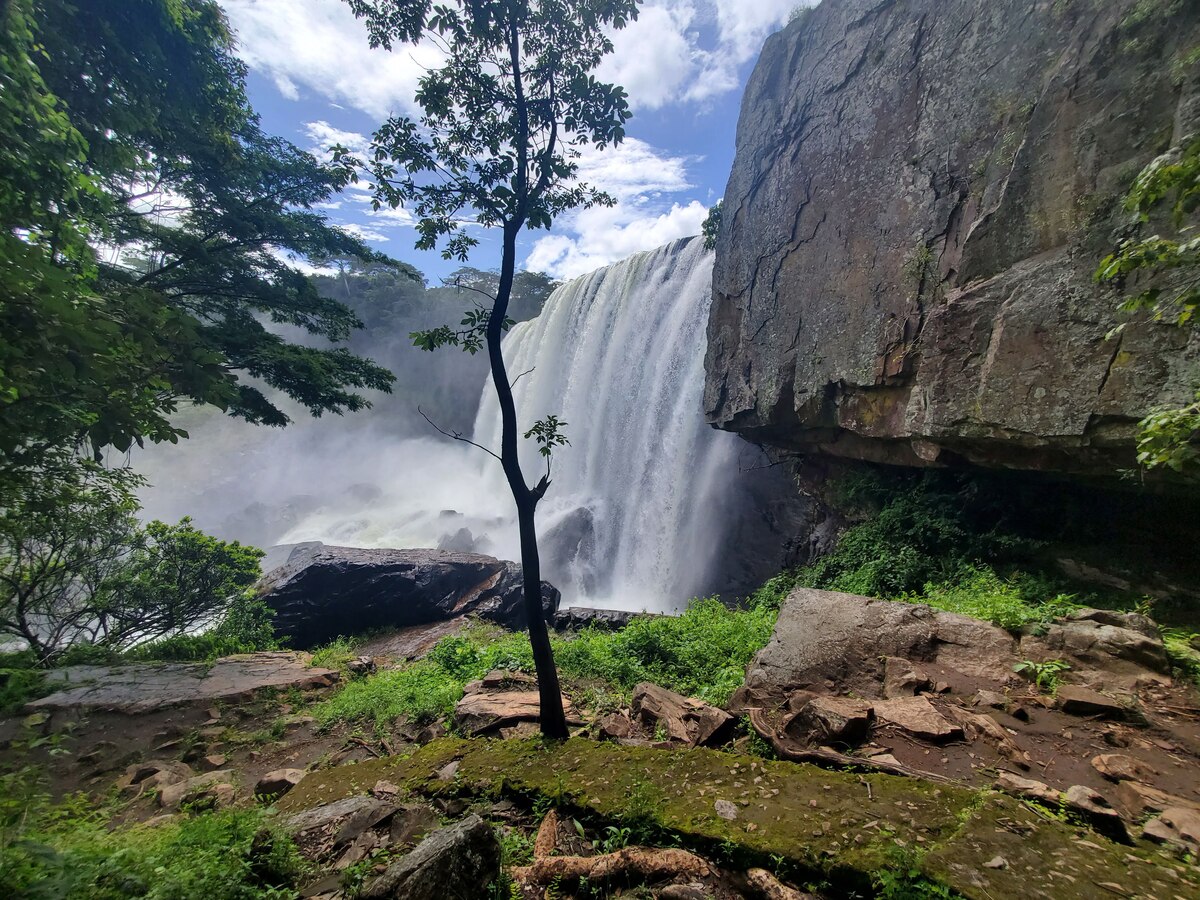
Wonders of Zambia
Highlights of Zambia are waterfalls, including one of the greatest natural monuments of the world – Mosi-oa-Tunya or Victoria Falls. There are countless other impressive waterfalls in the country, such as Kalambo Falls, Lumangwe Falls, and many others. Another highlight is prehistoric rock art. In the country have been found hundreds of sites with prehistoric paintings and engravings. This art shows people and animals, but often also – geometric symbols.
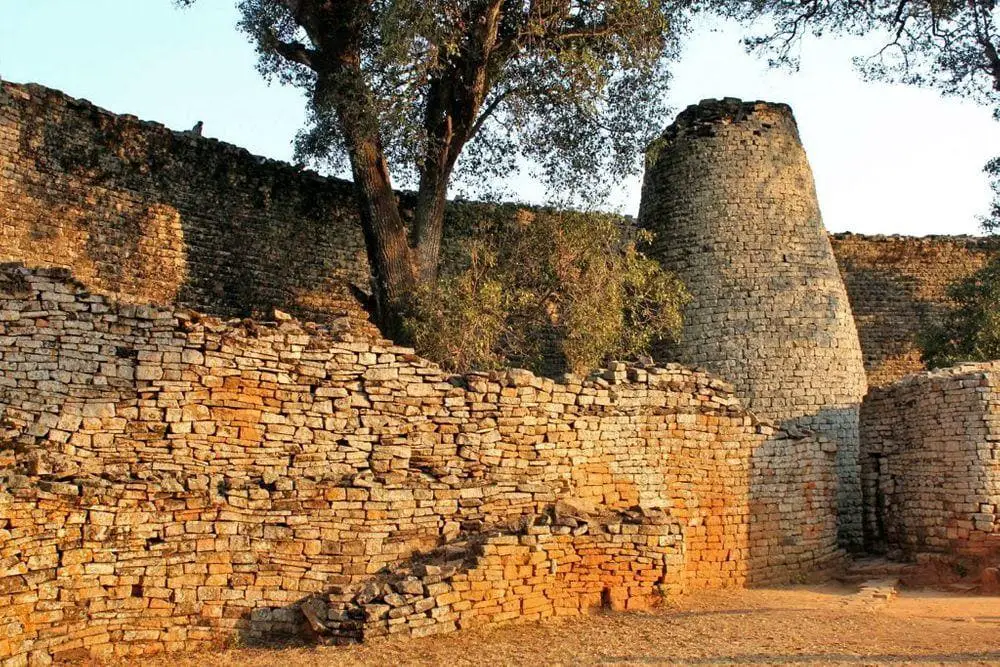
Wonders of Zimbabwe
Highlights of Zimbabwe are the only true large ancient stone structures south from Sahara. Best known by far is Great Zimbabwe, which gave a name and cultural symbols for the country, but there are hundreds of more sites. Ecosystems and giant trees. Zimbabwe has the southernmost African rainforest – Chirinda Forest, where grows a truly unique mahogany tree. Eastern Highlands of Zimbabwe have several outlying "islands" of tropical forest with numerous endemic species of plants and animals.
 Recommended books
Recommended books
Into Africa: The Epic Adventures of Stanley and Livingstone
“Into Africa” traces the journeys of Dr. David Livingstone and journalist Morton Stanley in alternating chapters, capturing with immediacy the dangers, disease, and beauty they encountered in the heart of Africa. The first book to examine the interworkings of physical challenges, political intrigue, and larger-than-life personalities, is a fascinating work of narrative history.
Footsteps Through Time – A History of Travel and Tourism to the Victoria Falls
Exploring over 150 years of travel and tourism to Victoria Falls, ‘Footsteps Through Time’ charts the evolution of a global tourism attraction. Discover the human heritage of this famous natural wonder and the people who have carved their names in its history – from the arrival of Dr. David Livingstone in 1855, the coming of the railway and opening of the Victoria Falls Bridge fifty years later, to the development of international air travel and transformation into the modern tourism destination we know today.

